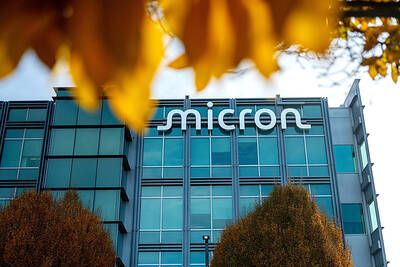India has banned the import of drones, a move that effectively blocks an emerging market for China’s SZ DJI Technology Co (大疆創新), the world’s top drone maker, and encourages a nascent local industry to increase production.
Import of some drone components is to be allowed without approval, the Indian Directorate-General of Foreign Trade said in an order late on Wednesday.
Drones used for research and development, defense and security purposes would be exempt from the ban, the government said.

Photo: AFP
Amid the continuing disputes between China and US, drones have taken center stage as concerns surface that Shenzhen, China-based DJI might be relaying some sensitive data to Chinese intelligence agencies on everything from critical infrastructure, such as bridges and dams, to personal information, such as heart rates and facial recognition.
India last year relaxed rules on the use of drones to make it easier to acquire licenses and allowed heavier payloads, so the devices can potentially be used as uncrewed flying taxis.
India is to offer 1.2 billion rupees (US$16 million) of incentives for drone makers under Indian Prime Minister Narendra Modi’s US$20 billion plan to lure the world’s biggest brands to make their products in India and export them to the world.
Rattanindia Enterprises Ltd, a local drone maker, said that India’s move would help to make the nation a drone manufacturing hub.
The new rules would allow better efficiency in supply-chain operations, inventory and fund management, the company said in a statement yesterday.
The pandemic has intensified a shift to automated delivery for meals, groceries, medical supplies and other essentials, boosting the drone industry.
Autonomous-vehicle firms, delivery start-ups and drone operators have touted the benefits of contactless systems.

GROWING OWINGS: While Luxembourg and China swapped the top three spots, the US continued to be the largest exposure for Taiwan for the 41st consecutive quarter The US remained the largest debtor nation to Taiwan’s banking sector for the 41st consecutive quarter at the end of September, after local banks’ exposure to the US market rose more than 2 percent from three months earlier, the central bank said. Exposure to the US increased to US$198.896 billion, up US$4.026 billion, or 2.07 percent, from US$194.87 billion in the previous quarter, data released by the central bank showed on Friday. Of the increase, about US$1.4 billion came from banks’ investments in securitized products and interbank loans in the US, while another US$2.6 billion stemmed from trust assets, including mutual funds,

Micron Memory Taiwan Co (台灣美光), a subsidiary of US memorychip maker Micron Technology Inc, has been granted a NT$4.7 billion (US$149.5 million) subsidy under the Ministry of Economic Affairs A+ Corporate Innovation and R&D Enhancement program, the ministry said yesterday. The US memorychip maker’s program aims to back the development of high-performance and high-bandwidth memory chips with a total budget of NT$11.75 billion, the ministry said. Aside from the government funding, Micron is to inject the remaining investment of NT$7.06 billion as the company applied to participate the government’s Global Innovation Partnership Program to deepen technology cooperation, a ministry official told the

Taiwan Semiconductor Manufacturing Co (TSMC, 台積電), the world’s leading advanced chipmaker, officially began volume production of its 2-nanometer chips in the fourth quarter of this year, according to a recent update on the company’s Web site. The low-key announcement confirms that TSMC, the go-to chipmaker for artificial intelligence (AI) hardware providers Nvidia Corp and iPhone maker Apple Inc, met its original roadmap for the next-generation technology. Production is currently centered at Fab 22 in Kaohsiung, utilizing the company’s first-generation nanosheet transistor technology. The new architecture achieves “full-node strides in performance and power consumption,” TSMC said. The company described the 2nm process as

Even as the US is embarked on a bitter rivalry with China over the deployment of artificial intelligence (AI), Chinese technology is quietly making inroads into the US market. Despite considerable geopolitical tensions, Chinese open-source AI models are winning over a growing number of programmers and companies in the US. These are different from the closed generative AI models that have become household names — ChatGPT-maker OpenAI or Google’s Gemini — whose inner workings are fiercely protected. In contrast, “open” models offered by many Chinese rivals, from Alibaba (阿里巴巴) to DeepSeek (深度求索), allow programmers to customize parts of the software to suit their